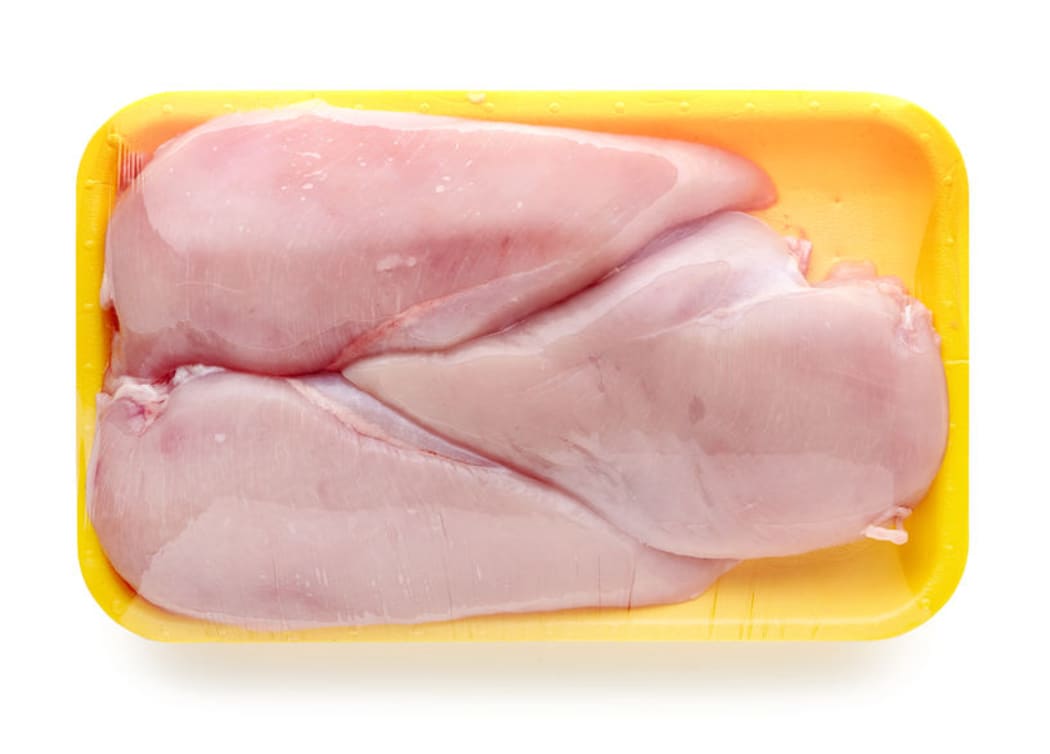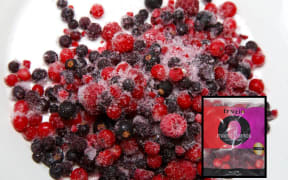A public health expert wants raw chicken labelled with the amount of bacteria it contains.

Campylobacter can survive if chicken is not cooked properly. Photo: 123RF
Nearly two-thirds of fresh chicken tested by Consumer New Zealand was contaminated with campylobacter, the consumer group says.
Consumer NZ chief executive Sue Chetwin said it detected the infection in 26 of 40 chicken products bought from supermarkets and tested.
Otago University professor of public health Michael Baker said that was no surprise given campylobacter was the country's biggest food safety problem.
He said the Ministry for Primary Industries was not taking action on the problem and should make suppliers put test results on chicken packaging to remind people how much bacteria the birds carry.
"The great benefit of that is it starts to reward producers who are producing less contaminated chicken and also gives the consumer an ongoing message about how contaminated chicken is."
Campylobacter can survive if raw chicken is not cooked properly. It can also spread to other foods and contaminate surfaces where food is prepared.
Campylobacter can also cause Guillain-Barré syndrome, which attacks the immune system and can cause permanent paralysis.
Professor Baker said MPI had plenty of information about campylobacter, and should be making it public.
"The industry knows exactly the level of contamination and so does MPI, because they're testing thousands of chicken every year.
"It would be very easy for MPI to post these levels on their website, they could provide very precise estimates by the manufacture.
He said they could also require labels to be put on fresh chickens at supermarkets.
MPI director of food science and risk assessment Steve Hathaway told Morning Report campylobacter was a big problem in New Zealand, but a lot of work had been done in the past 10 years to stop it being transferred to humans.
He said about 60 percent of chicken sold in New Zealand was infected with campylobacter.
MPI was working with the industry to reduce that number, but that was difficult, he said.
"At farm level, it's almost impossible to eliminate campylobacter from the grower flocks.
"So the birds come into the slaughter house contaminated and then it's up to the industry, during processing, to reduce it as much as possible.
He said in the past year, there were about 135 cases of campylobacter through chicken, per 100,000 people.
However he said many people did not report the disease and estimated that number could be 10 times higher.
Mr Hathaway said consumers needed to understand there was a high chance of all chickens having campylobacter, but said the burden was on producers and not consumers as much as possible.
"If a company continues to not produce according to our target, and that's a minimal level of contamination, we can shut them down."
Targeted efforts had managed to reduce the human rate of campylobacter due to poultry by 50 percent over the past 10 years, he said.




